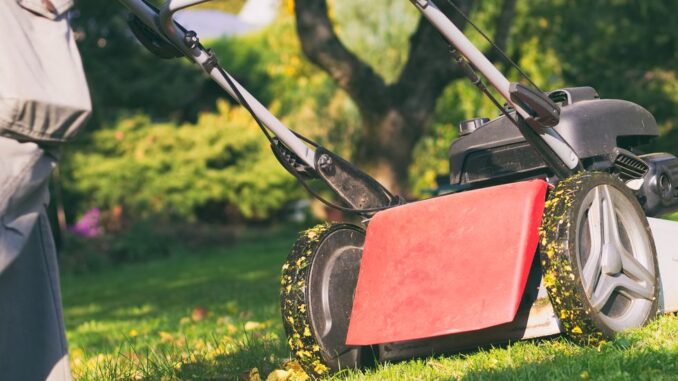
The Lawn-Care Mistake Most People Make Every Week — And How to Fix It
A lush, green lawn is often seen as a badge of honor for homeowners — a sign of curb appeal, care, and pride. Yet despite our best efforts, many of us are unknowingly sabotaging our yards every single week with one simple but costly mistake:
You’re mowing your lawn too short.
This common misstep, sometimes called “scalping,” seems harmless — after all, a closer cut means more time between mowing, right? But in reality, cutting your grass too low can seriously damage your lawn, leaving it vulnerable to weeds, disease, and drought.
Let’s dive into why this lawn-care blunder is so widespread, what it does to your yard, and the expert-backed steps you can take to fix it — and finally get the healthy, vibrant lawn you’ve been chasing.
Why Cutting Grass Too Short Is a Problem
Grass isn’t just a carpet of green — it’s a living plant that thrives on balance. Cutting your grass too low may make your lawn look neat in the short term, but it causes long-term harm to the health of your turf.
Here’s what happens when you mow too short:
1. Stresses the Grass
Just like trees, grass blades carry out photosynthesis — they need surface area to absorb sunlight and create energy. When you chop off too much, you remove the plant’s energy source, stressing the root system and slowing growth.
2. Weakens the Roots
Short grass means shorter roots. When roots can’t grow deep, your lawn struggles to find water and nutrients, especially during hot or dry weather. This leads to patchy, yellow spots — and eventually, dead grass.
3. Invites Weeds
Thicker, longer grass provides natural shade that helps prevent weed seeds from germinating. But when you scalp the lawn, you expose the soil and give weeds like crabgrass and dandelions the perfect conditions to take over.
4. Increases Disease Risk
Cutting grass too low leaves it open to fungal infections, pests, and other lawn diseases. Damaged blades are weaker and more likely to attract trouble.
Why People Do It Anyway
The logic seems innocent enough: the shorter the grass, the less often you have to mow. But convenience comes at a cost.
Many homeowners also assume that a “golf course” look is ideal. What they don’t realize is that golf course grass is an entirely different species — carefully maintained by professionals using specialized equipment and intense care routines.
Your typical Kentucky bluegrass or fescue lawn simply can’t handle the same treatment.
How Short Is Too Short?
Lawn care experts recommend following the “One-Third Rule”:
Never cut more than one-third of the grass blade’s total height in a single mowing.
Here are general mowing height guidelines for popular grass types:
- Cool-season grasses (like Kentucky bluegrass, fescue): 2.5 – 3.5 inches
- Warm-season grasses (like Bermuda, Zoysia): 1.0 – 2.5 inches
- Shady lawns: Add half an inch more to the mowing height to help them gather more light.
Set your mower accordingly — and adjust for seasonal changes. In summer heat, it’s better to let your lawn grow a little taller to conserve moisture.
Signs You’re Mowing Too Low
Not sure if you’re making this mistake? Here are the red flags:
- Your lawn looks brown or yellow after mowing
- Weeds are spreading despite weekly mowing
- Soil is visible between blades of grass
- Grass grows back unevenly or slowly
- You notice bare patches forming
If this sounds like your yard, it’s time to reset your mowing habits.
How to Fix It: Smart Lawn-Care Tips
Here’s how to correct the damage and nurse your lawn back to full health:
✅ 1. Raise Your Mower Blade
Set your mower to the recommended height for your grass type. If you’re unsure, start high — you can always go lower later.
✅ 2. Sharpen the Blades
Dull mower blades tear grass rather than cutting it cleanly, causing further stress. Aim to sharpen your blades every 4–6 weeks during peak mowing season.
✅ 3. Mow When Dry
Mowing wet grass can create clumps and uneven cuts. It also increases the risk of spreading disease.
✅ 4. Leave the Clippings
Grass clippings are a natural fertilizer. They break down quickly and return nutrients to the soil, promoting growth without chemicals.
✅ 5. Water Deeply — Not Frequently
Rather than watering every day, give your lawn a deep soak 1–2 times per week. This encourages deeper root growth, especially important after raising your mower height.
✅ 6. Feed Your Lawn
Use a nitrogen-rich fertilizer in the spring and early summer. Choose organic or slow-release formulas to avoid burning your lawn.
Bonus Tip: Alternate Mowing Patterns
Always mow in different directions each time you cut the lawn. This helps prevent ruts, promotes upright growth, and reduces soil compaction.
The Takeaway
Mowing too short is one of the most common lawn-care mistakes — but it’s also one of the easiest to fix. With a few simple adjustments, you can reduce stress on your grass, improve root development, and finally enjoy that thick, green lawn you’ve been dreaming of.
The next time you roll out your mower, resist the urge to scalp the yard for the sake of fewer mowings. Remember: a healthy lawn is a tall lawn.
Give your grass some room to grow, and it will reward you in return.
Leave a Reply